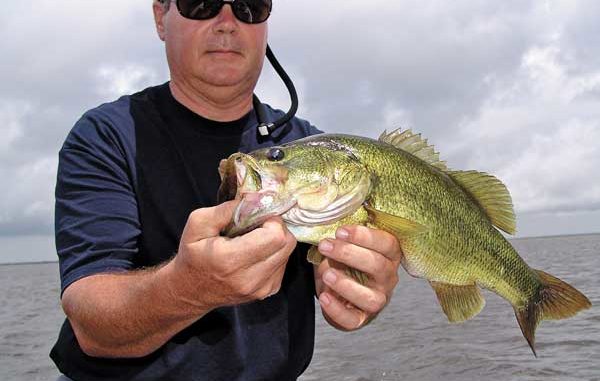
A half dozen great egrets and as many blue herons were scattered along the edge of a small cove, and every five minutes or so, they would take a few steps back.
My fishing partner, Sam Swett, a bass tournament pro from Covington, explained our dilemma.
“Those birds are in there looking for the baitfish, and I’ll bet that’s where the bass are,” he said. “The only problem is that the tide is coming in, and that’s too shallow for us to reach.”
A frustrating day in the Delacroix marsh found us battling a gusty wind and restricted by a less-than-favorable tide. Nevertheless, the explosive strikes we saw in and out of our range, plus the dozen or so fish in our boat and as many more in our partnering boat, spoke volumes about the tremendous potential to be found beyond the sweet water.
Here’s the low down: Coastal brine pushes against the edges of inland waterways, encroaching where it can, but otherwise exerting a bully’s shove into rivers, creeks and marshes. Even where saltwater intrusion is not so profound, the daily ebb and flow will swell and contract adjacent waters.
This creates a dynamic environment where water level determines both opportunity and access. Suffice it to say, the feast-or-famine analogy looms large.
Rise and fall
Water level is really the linch pin and the outgoing tide offers the most consistently productive stage. For clarity, a rising tide has plenty of benefit for fish and fishermen.
“When the incoming water floods the shorelines and the shallow ponds, those bass move in to take advantage of all those new food sources,” Swett explained. “If you can reach them, you can catch a lot of fish in these spots.”
No doubt, more water means more depth, and that means you can take your boat into more secluded places. The flipside, however, is that fish will go where fish can go. That means a rising tide usually spreads your quarry across a broad playing field, and you can burn up a lot of daylight searching broad expanses.
However, the old gravitational axiom, “what goes up must come down,” has a definite tidal application. Ultimately, your best tactical advantages ride the falling water. For one thing, declining depths usher bass into tighter confines, where you’re more likely to find good numbers of eager fish.
Capt. Anthony Randazzo of Paradise Plus Guide Service mostly targets redfish and trout, but commonly encounters largemouth bass in his marsh trips. Experience has taught him that the last three hours of an outgoing tide and the first hour of the incoming cycle will find bass hunkered down in their comfort zone, which is generally in deeper sloughs, cuts and main bayous.
“On the higher tide stages, the fish will scatter, and you’re not sure where they’re going to be,” Randazzo said. “But you know on the lower stages that those fish are locked on to those outer fringes.”
Complementing the concentration effect, an outgoing tide typically brings better water quality into an area, and that’s a big turn-on for bass. Swett demonstrated the losing tide’s rejuvenating properties with acuteness in 2004 when he won the FLW Tour event on the Achafalaya Basin.
Fishing main bayous with ditches feeding into ponds lined with abundant vegetation, Swett banked much of his plan on water that would better itself after visiting the interior marshes. Essentially, the rising tide would push characteristically muddy water into the ponds, and the losing tide would draw it out cleaner, thanks to the filtration of grass and weeds.
“When the water comes out, it’s clean, plus it carries out lots of nutrients that baitfish feed on, so of course the bass were there feeding on them,” Swett said. “It was almost like I was fishing a rip line. I was staying on the clean water. Actually as the water fell, the main bayou was cleaning up.”
Click here to read the rest of this story, which first appeared in the November 2008 issue of Louisiana Sportsman magazine.


